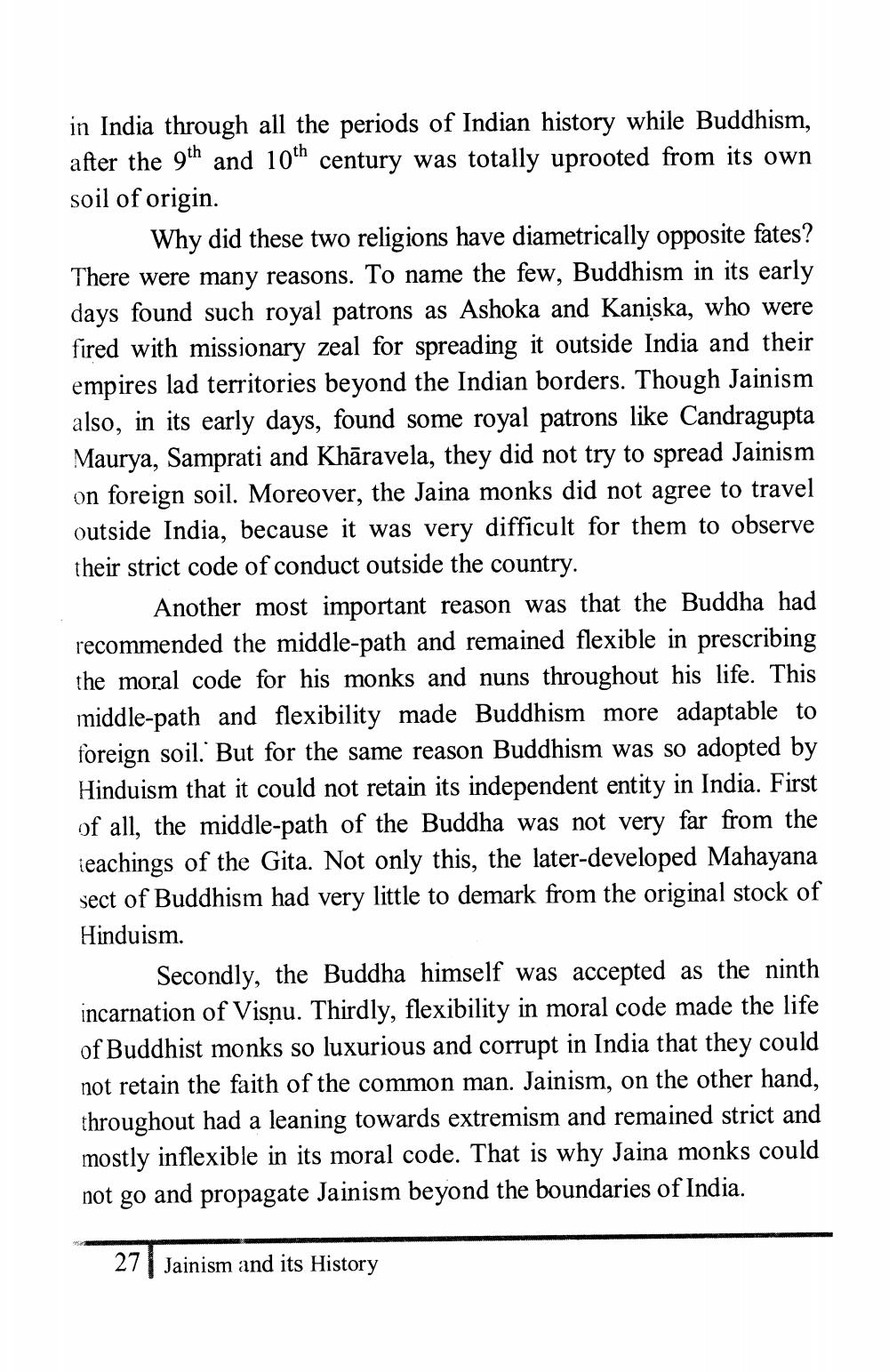________________
in India through all the periods of Indian history while Buddhism, after the 9th and 10h century was totally uprooted from its own soil of origin.
Why did these two religions have diametrically opposite fates? There were many reasons. To name the few, Buddhism in its early days found such royal patrons as Ashoka and Kaniska, who were fired with missionary zeal for spreading it outside India and their empires lad territories beyond the Indian borders. Though Jainism also, in its early days, found some royal patrons like Candragupta Maurya, Samprati and Khāravela, they did not try to spread Jainism on foreign soil. Moreover, the Jaina monks did not agree to travel outside India, because it was very difficult for them to observe their strict code of conduct outside the country.
Another most important reason was that the Buddha had recommended the middle-path and remained flexible in prescribing the moral code for his monks and nuns throughout his life. This middle-path and flexibility made Buddhism more adaptable to foreign soil. But for the same reason Buddhism was so adopted by Hinduism that it could not retain its independent entity in India. First of all, the middle-path of the Buddha was not very far from the
eachings of the Gita. Not only this, the later-developed Mahayana sect of Buddhism had very little to demark from the original stock of Hinduism.
Secondly, the Buddha himself was accepted as the ninth incarnation of Visņu. Thirdly, flexibility in moral code made the life of Buddhist monks so luxurious and corrupt in India that they could not retain the faith of the common man. Jainism, on the other hand, throughout had a leaning towards extremism and remained strict and mostly inflexible in its moral code. That is why Jaina monks could not go and propagate Jainism beyond the boundaries of India.
27
Jainism and its History




